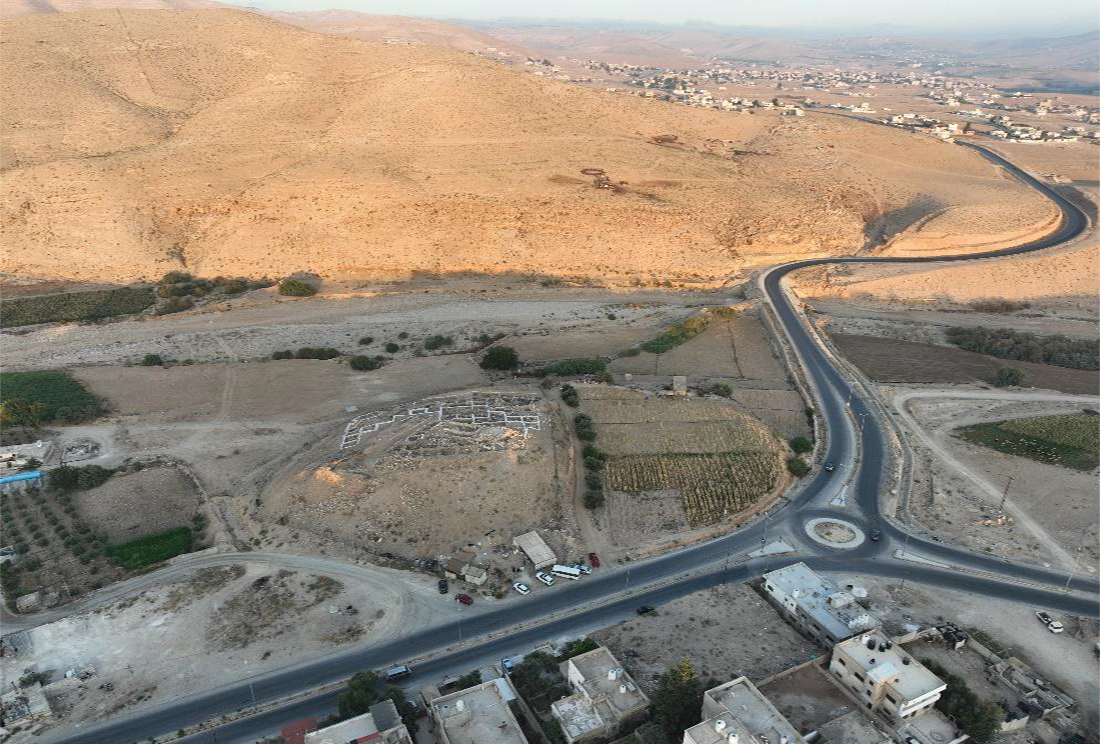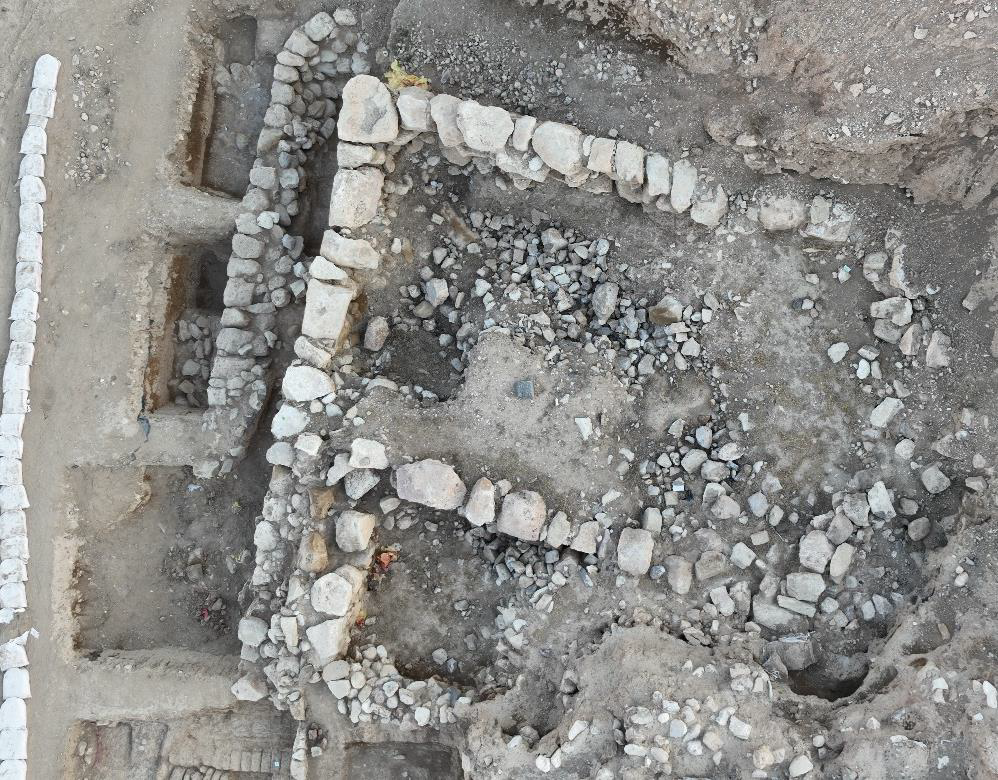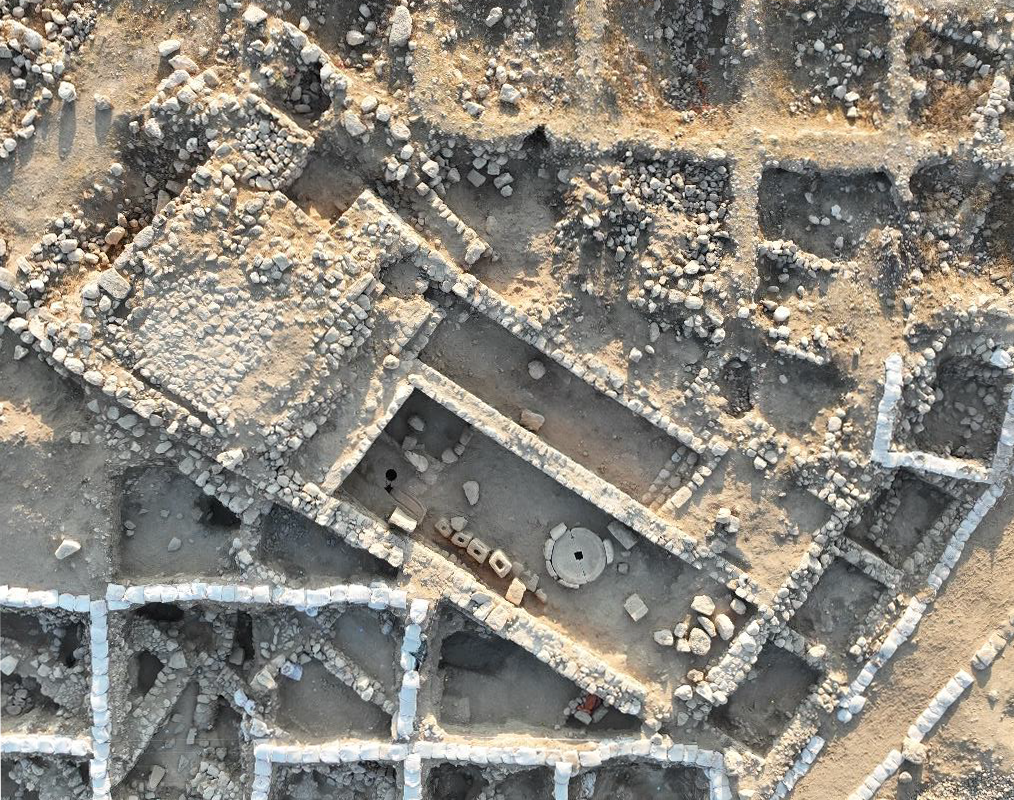Abstract
This research “spot light’ focuses on enhancing our understanding of cultural history of Jordan in one of less archaeologically investigated area in Upper Wadi Az-Zarqa. The University of Jordan carried out several seasons of excavations at the site of Tell Es-Sukhnah to shed light on, among others, two main cultural phases of human-environment interaction in this area. These two phases represent the so-called “second Urban period” which covered the Middle Bronze Age (ca. 2000-1550 BCE). The second cultural phase represents the Ammonite period or the Iron Age II (ca. 1000-539 BC). contrary to the main stream of thought, the north-east part of Jordan plays a significance cultural role during the above two mentioned periods. In additions, excavations shed light on the economic role of the people of Tell Es-Sukhnah during the Hellenistic- Roman periods.
Research Background and Aims
The archaeological site of Tell Es-Sukhnah is located on the right bank of wadi (Seil) az-Zarqa, at about 25 km north –east of Amman, and ca. 7 km north-north-west of az-Zarqa city. The site is an oval Tell, situated at about 500.1 m above sea Level. Tell Es-Sukhnah is about 7.5 acres, with archaeological deposits of ca 13 m in height. The archaeological site of Tell es-Sukhnah is located in Upper Wadi Az-Zarqa region. In this region, Wadi Az-Zarqa stretches from Amman to the north, north -east and then to the west, where it junctions with Wadi Dhlyl, one of the major tributary of wadi az-Zarqa (Fig. 1).
The region of Upper Wadi az-Zarqa is characterized by diversity of environmental conditions. Mediterranean climate is prevailing in south-western part (in Amman), and then near Zarqa, to the north-east, an Iroano-Turanian climate is prevailed. Such environmental diversities are reflected in annual precipitations. The humid climate in the Mediterranean receives over 300 mm annually, and it drops to less than 150 mm in Zarqa. Based on that, Tell es-Sukhnah is considered to be part of semi-arid area, and rain fed agriculture cannot be possible. Such environmental conditions encourage the excavations in this part of Jordan in order to uncovering the human-environment interactions during the different periods of occupations at the site.
Archaeological excavations and surveys in Upper Wadi Az-Zarqa highlighted the different periods of human occupations in this area. Evidence of human remains are dated back to Paleolithic period (Besancon et al 1984). Furthermore, archaeological surveys in the area increase our understanding of intensity of human occupations during later periods such as Bronze, Iron, classical and Islamic periods. With respect to Bronze and Iron Ages in Upper Wadi Az-Zarqa, the site of Tell Es-Sukhnah is considered one of the major and key sites during the Middle Bronze Age. The site will shed light on the shifting pattern of human occupation with the end of Early Bronze Ages (after the abandoned of the city of Khirbet al-Batrawy and the site of al-Ruhyl) and the characteristics of the second urban phase in this part of Jordan. Furthermore, the identification of Iron Age deposits at the site will highlight the discussion of the extension of Ammonite territories beyond wadi Az-Zarqa to the north. In addition to that, the intensity of occupation during the Hellenistic period at the site will increase our understanding of this period at a regional and interregional scales.

Fig. 1: Aerial view of Tell Es-Sukhnah and its surrounding.
Main Results of research at Es-Sukhnah
Excavations at Tell Es-Sukhnah uncovered the cultural significance of the site during three main periods. The preliminary results can be listed as following:
1- The Middle Bronze Age horizon
This period is well identified in the western part of the Tell. Different phases of use and re-use during the Middle Bronze Age have been identified. In the north-western part of the site, different architectural remains were exposed which includes a tower, revetment wall and hearths (Fig. 2). The tower has a rectangular plan and measures ca.11 m x 7m. it built of huge size stones, and the stones outer faces are more dressed if compared to inner ones. To the west of this tower and at about 1 meter a revetment wall was built. The wall was built of medium to large size stones and its outer surface is well dressed. The wall runs in a semi- circular direction from the north –east to south-west. It seems that the revetment wall is older that the tower and built during the early phases of Middle Bronze Ages. Two remarks should be mentioned with respect to the use of adjoin area to the west and east of the revetment wall. A plaster floor and a hearth were uncovered adjunct to the western side of the wall. Meanwhile, ashes and plaster floors were found in the area between the revetment wall and the tower. Domestic activities were carried out in this area. Of special interest in the area to the west of the revetment wall is the presence of gravel layers which hint at occurring of heavy flood during the Middle Bronze Age period.

Fig. 2: The Middle Bronze Age Tower and the revetment wall.
Of special architectural remains of Middle Bronze Age in the north-west part of the site is the uncovering of a storage room. Two large storage jars of
Middle Bronze Age IIB were found inside a pit. The room is part of a domestic building.
In the south-west part of Tell Es-Sukhnah, a building built of massive stones were exposed. This building has a rectangular plan and consists of at least of 4 rooms. The southern wall of it measures ca. 2.7 m. Only domestic artifacts such as grinding stones and storage jars were found in one of its room. The proper function of this building is not yet clear.
2- The Iron Age horizon
One of the main aim of excavations at Tell Es-Sukhnah is to attest the validity of the hypothesis that the territory of the kingdom of Ammon was limited by wadi Az-Zarqa. Fortunately, the pottery assemblage of Iron Age horizon at the site show strong similarities with Amman Citadel and other Ammonites sites such as Jawa. The Iron Age remains at the site is well represented and include domestic buildings (Fig. 3) and part of a cultic buildings.
Fig. 3: The Iron Age II domestic building
3- The Hellenistic –Roman horizon
Contrary to the results of archaeological survey at Es-Sukhnah, the evidence of Hellenistic and Roman occupations at the site is well represented. The
people during this period re-organized their settling at the site. Major architectural remains were found in eastern part of the site. Main architectural remains of Hellenistic and early Roman is the olive press complex and domestic buildings (Fig. 4). In addition, there is evidence of trade relationship between Es-Sukhnah and Rhodes during the late Hellenistic period as this materialized in the presence of Rhodian Amphora with inscription. Trade relationship with the Nabataean kingdom has been attested with presence of fine and decorated Nabataean pottery at the site.

Fig. 4: The Olive oil press and surrounding rooms
Conclusion
The archaeological excavations at Tell Es-Sukhnah highlight the importance of the site during the middle-late Bronze age period. Es-Sukhnah is one of the major Middle Bronze Age site in upper wadi az-Zarqa. It has defensive structure such as the tower and people interacted with their environment by building revetment wall to prevent the site from flood. These public buildings show that the site, despite its small size, was small town. Occupation at the site seems to begin with the Middle Bronze Age IIA, which made it a significant one in Jordan. Moreover, the excavations at the site show that the Middle Bronze occupation was long period and expand to the end of Late Bronze Age I (ca. 2000 to 1550 BC and from 1550 to ca 1400 BC). Further excavations at Middle –Late Bronze deposits will enable understanding the nature and function of the town at intra/inter regional scales.
With respect to Iron Age period, excavations at limited part of the site show that different phases of occupations can be identified. Evidence of early phase of Iron Age II has been well attested, and pottery evidence shows continuous occupation till the end of Iron Age. The long occupations of Iron Age highlight the importance of the site to understand the sequences and typo-chronology of pottery assemblages and their importance of linking them with the other sites in the Ammonite territories.
During the Hellenistic and early Roman period, the site played an important economic role. The presence of olive press and the trade with Rhodes showed that the site has significance function at regional and inter-regional scales.
Main Contact
Prof. Nabil Ali
Department of Archaeology
School of Archaeology and Tourism
The University of Jordan